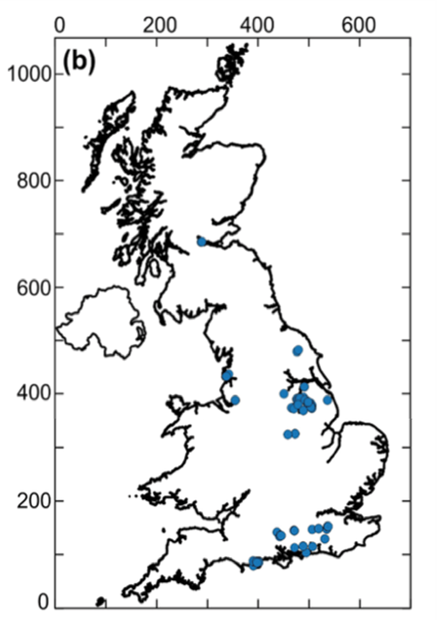2E: Natural Mechanisms
Repurposing Hydrocarbon Wells for Geothermally Heated Horticulture in the UK, William Nibbs, Rob Westaway†, Prof. Gioia Falcone (James Watt School of Engineering, University of Glasgow)
Despite an abundance of accessible subsurface heat, geothermal energy remains relatively unexploited in the UK. By repurposing abandoned hydrocarbon wells, deep borehole heat exchangers (DBHEs) can ‘mine’ low-enthalpy energy from the subsurface while avoiding drilling costs, reducing financial risks. Previous work from our group determined the most suitable candidates for geothermal repurposing using a systematic data-screening analysis of onshore UK hydrocarbon wells (Figure 1). The aim of the work herein is to predict the thermal performance of a candidate site (KM-8), in the Kirby Misperton gas field of North-East England, and assess its feasibility for commercial greenhouse spatial heating. A dual-continuum numerical model, including site-specific geology and borehole dimensioning, is implemented in MATLAB to determine DBHE thermal power outputs. Greenhouse demand-led DBHE operating conditions are met by PID flow-rate control in conjunction with a plate heat-exchanger and heat pump system. The parasitic loads, emissions savings and economic feasibility of the system are also calculated. The study shows that repurposing KM-8 has the potential to meet annual heating demands of an adjacent commercial-scale greenhouse. Facilitating knowledge and skills transfer between the petroleum and geothermal sectors will accelerate heat decarbonisation, improving the sustainability of food production in a ‘green’ greenhouse market post-Brexit.
Figure 1:

Natural Mechanisms and the Built Environment, Secondary Functions of SuDS, Public Wellbeing and Environmental Benefit, Lia Minty (Product Design Engineering Masters product, Glasgow School of Art)
Trickle is an interactive rain shelter and water feature designed to improve public wellbeing in urban environments. The aim of the project was to improve how the experience of weather is designed into city infrastructure, in a way that complements wider sustainability goals. Taking inspiration from trees and nature, Trickle is an example of how city infrastructure can reflect natural mechanisms in their ability to deflect and absorb rainwater: reducing the impacts of urban flooding and pollution from surface runoff water. During the rain, the product collects rainwater and tips when 200ml has been reached. Users can catch this tip of water and manipulate its journey through the movable arms. Through small internal piping and the use of a tipping bucket, the product requires no additional energy or pumping as it is designed to function within the natural variability of rain intensity. Trickle is an example of a water feature designed within the limitations of natural variability. At present, there are few examples of rain-responsive installations in the built environment. This project identified the opportunity to utilise natural mechanisms in the design of cities, and the potential to improve public wellbeing through increased time outdoors and engagement with natural elements.

